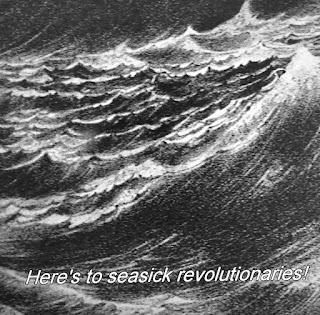A Different Time in a Different Country
Varda takes pains to stress in her 2007 introduction to Salut les Cubains [Salut, Cubans, or Here's to the Cubans, 1964 — shot in 1963 — the title a takeoff on the French "salut les copains," a cheers to friends] that the film is a sign of its times (she'll later, as I recall, backtrack similarly on the 1968 Black Panthers), that the "folklore of [the] political actions" was a dominant determinant in her engagement with an invitation to film the Cuban culture on the roughly tenth anniversary of the overthrow, which she would subsequently acknowledge as the onset of a "left-wing dictatorship." Nevertheless, her film exhibits an observational distance, a series of side-glances, of the realpolitik at play, and even here in '63 she opts instead to maintain a focus on the surface aspects of Fidel Castro's policies in order to cast an ethnographic glance at the society at large.
This 29-minute film begins with footage taken of a June '63 emissarial exhibition in Paris, Saint-Germain-des-Prés, celebrating the aforementioned tenth anniversary, replete with live native musicians and a host of invitees, among whose number include Alain Resnais and a presumable Chris Marker, their 8mm cameras hoisted for the occasion. This sequence constitutes the only moving footage of the film, for the remainder consists of still photos, à la photo-roman, cut together in rhythm (or, animated, she insists) to create a kinetic portrait of the nation under Castro and just beneath the U.S.'s Florida state. A pithy commentary penned by Varda and recited in alternation by Varda and Michel Piccoli guides the viewer through the images, thus weaving an associative travelogue of sorts that sets the tone for her later as-overtly political work of the second-half of the 1960s through the militantly (or rather, militated) feminist stretch of the 1970s.
She addresses several topics, that is, makes several observations on, a series of Cuban touchstones, fluidly, including but not limited to: the interplay of beards, cigars, and Cuban women; national artists in general; Fidel Castro himself (a Varda portrait of whom circumstantially but cannily affixes "wings of stone" to his body); Benny Moré; sugarcane harvesting; the literacy of the populace; Raúl Castro ("In '58, 82 men set sail from Mexico —") and the mythologization of his liberative group's crossing to Cuba; African immigrants and the religions they brought with them and further 'developed' (Lucumí, etc.); Afro-Cuban music and the rumba, with pots and pans employed in more chthonic quarters to effect a poésie concrète; national poets Nicolás Guillén and Roberto Retamar; the novelist Alejo Carpentier; the Chinese-Cuban painter Wilfredo Lam; the ink painter Raúl Milián; the painter René Portocarrero; charanga bands; Hemingway's house; the ICAIC and Cuban cinema.
Less emissarial propaganda then than catalogue born of genuine curiosity, beneath which one detects a sense of empathy and heart-felt admiration. Salut les Cubains. •
Other writing on Agnès Varda at Cinemasparagus:
La Pointe-Courte [1955]
Ô saisons ô châteaux [O Seasons, O Châteaux, 1957]
L'Opéra-Mouffe, carnet de notes filmées rue Mouffetard par une femme enceinte en 1958 [The Opéra-Mouffe: Diary Filmed on the rue Mouffetard in Paris by a Pregnant Woman in 1958, 1958]
Du côté de la Côte [Around the Côte, 1958]
Les fiancés du pont Mac Donald, ou (Méfiez-vous des lunettes noires) [The Fiancés of the Pont Mac Donald, or: (Beware of Dark Glasses), 1961]
Cléo de 5 à 7 [Cléo from 5 to 7, 1962]
Salut les Cubains [Salut, Cubans / Here's to the Cubans, 1964]
===














No comments:
Post a Comment
Note: Only a member of this blog may post a comment.